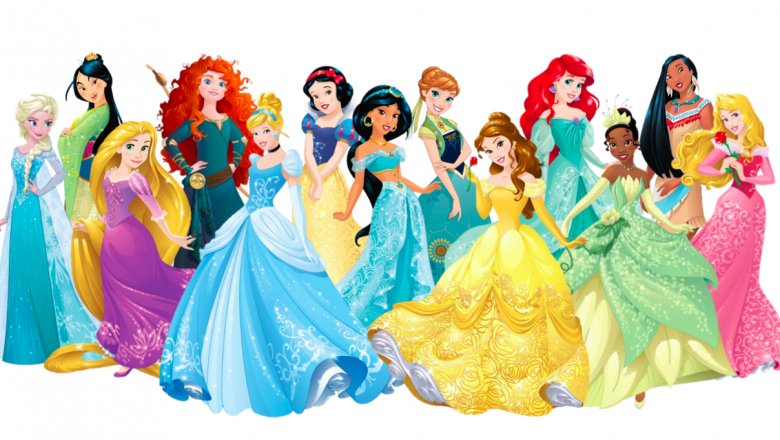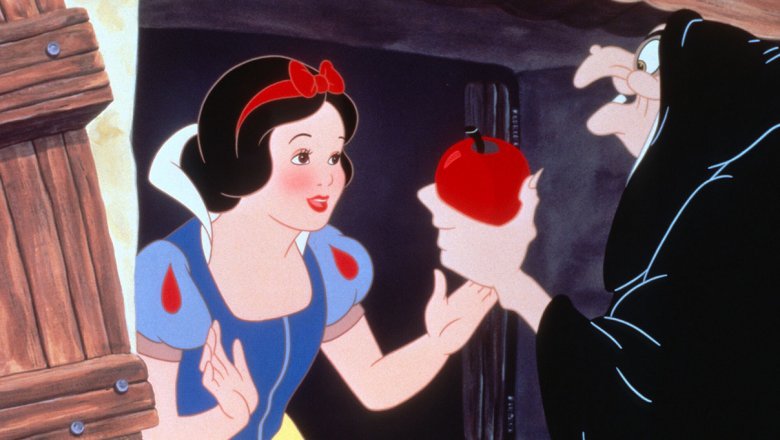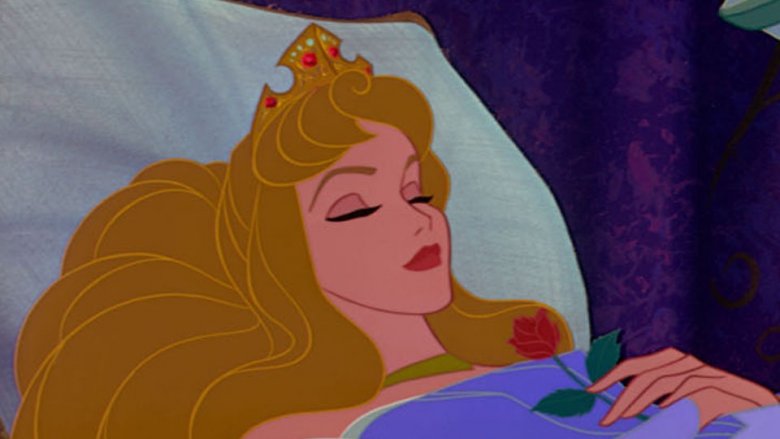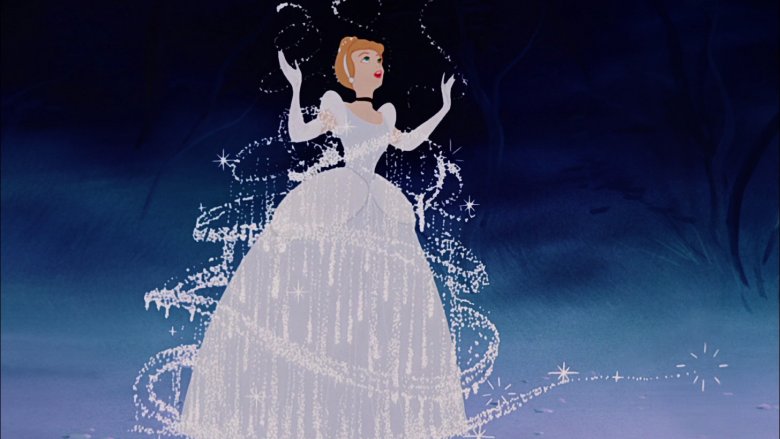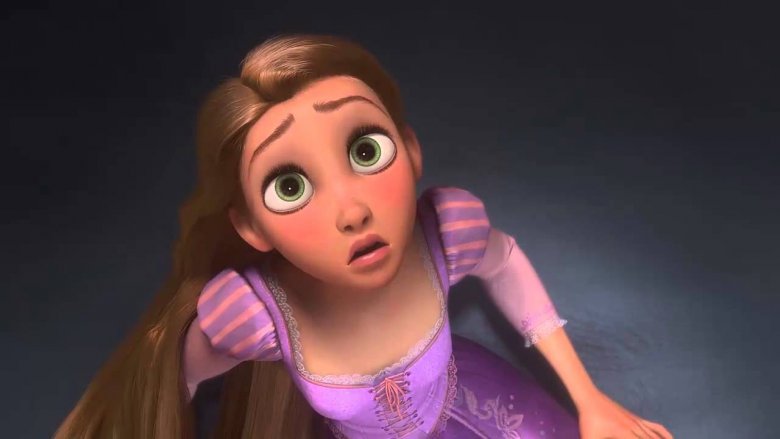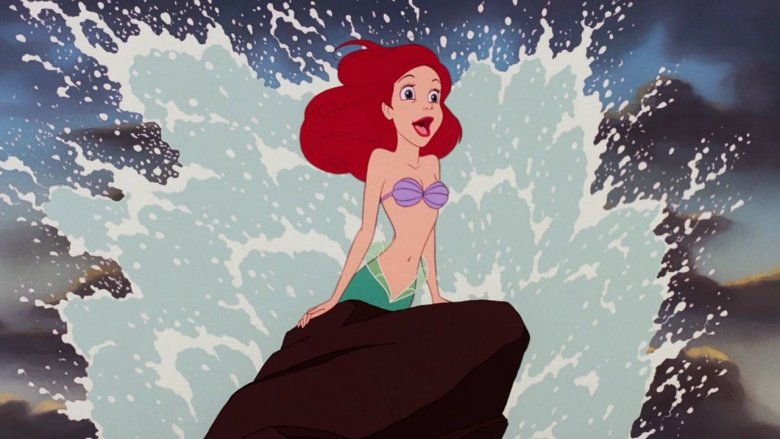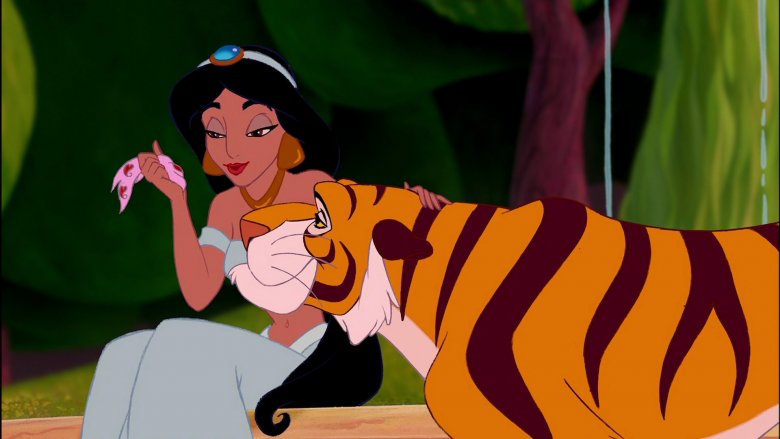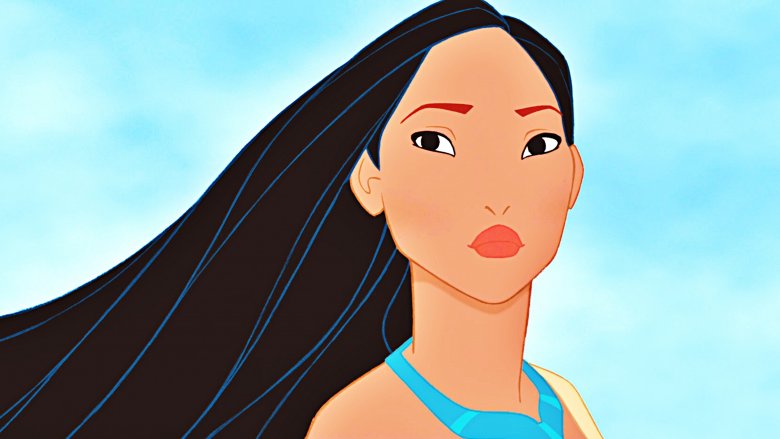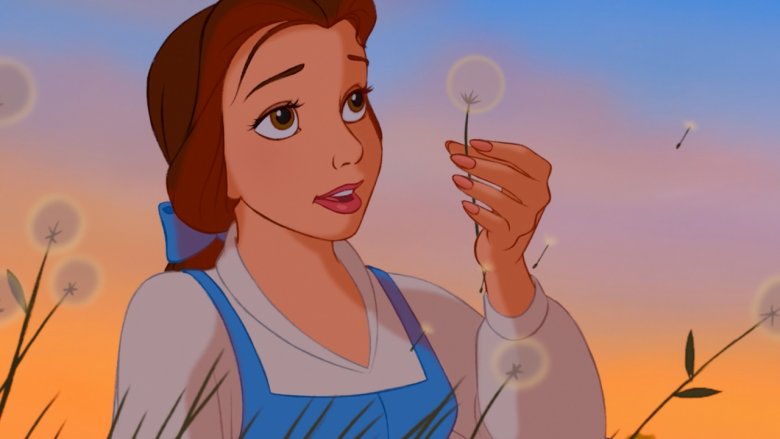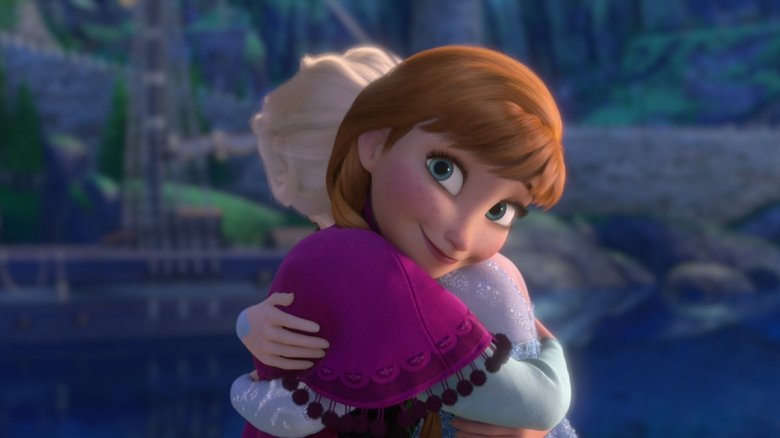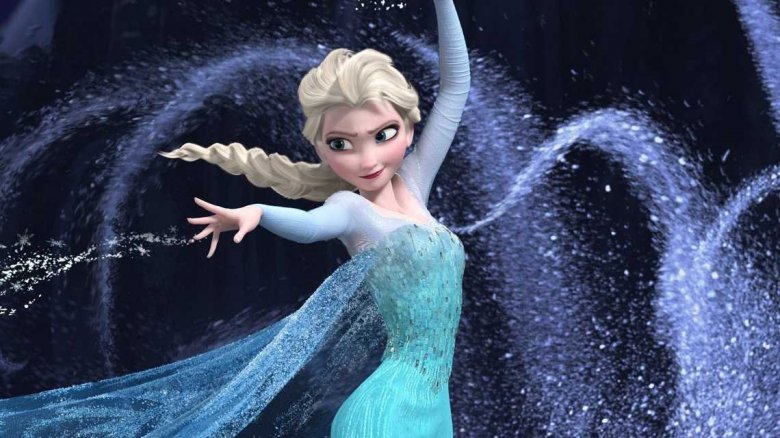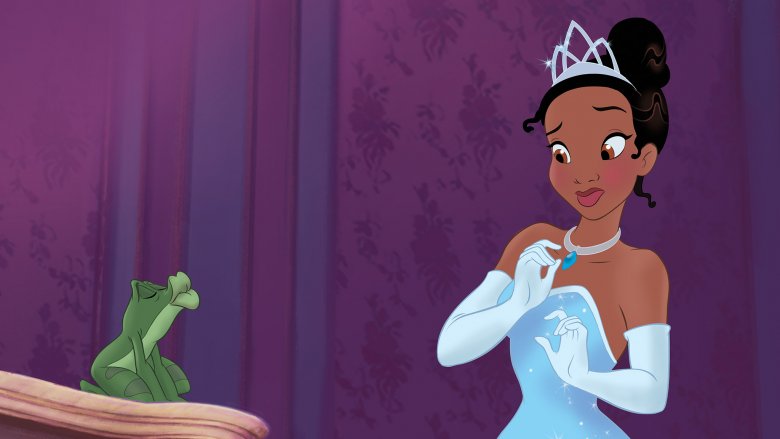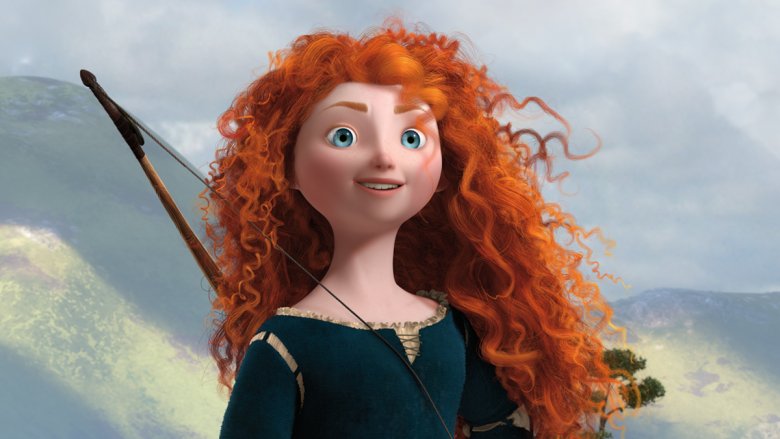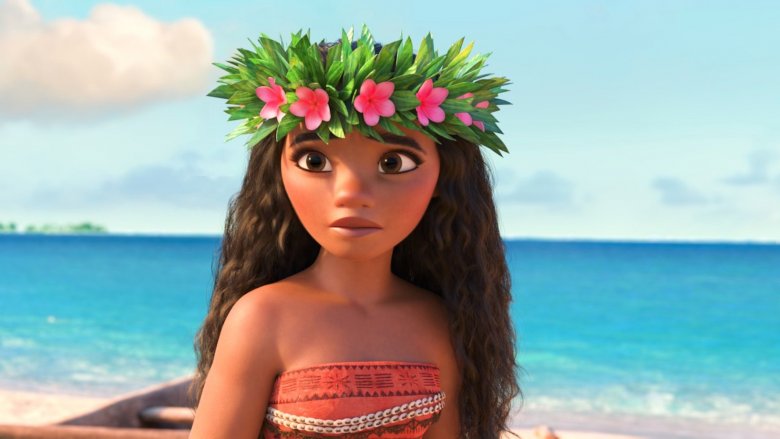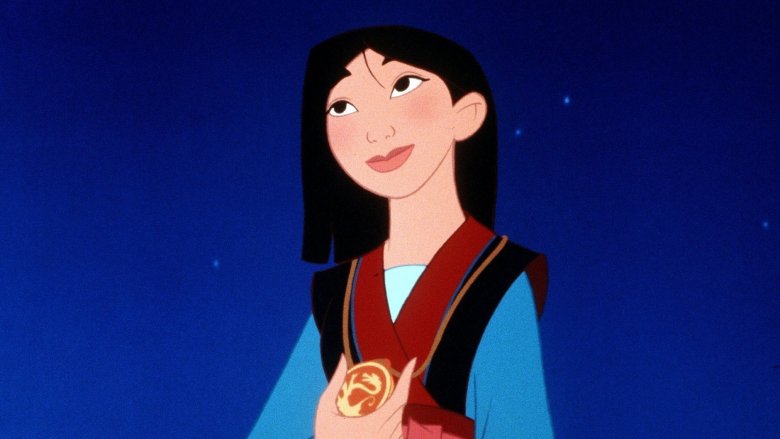Every Disney Princess Ranked Worst To Best
Generations of girls and boys have grown up on Disney's animated collection of films, and while there have been plenty of anthropomorphized animals and personified gadgets to warm the hearts of children throughout the world, it's the princesses that stand out.
Each of these young women—sometimes shockingly young, at that—have endured hardships and managed to overcome assorted obstacles, but time has proven that some of these characters are more positive influences than others. Here's a ranking of Disney's princesses, from worst to best, adjudged by their role model potential.
Snow White—Snow White and the Seven Dwarfs (1937)
What do you do when you're considered too beautiful to survive in your own kingdom and are forced to roam the woods aimlessly until you find a seemingly abandoned bit of shelter? Why, clean it up with the help of woodland creatures and on-the-spot songs of merriment, of course!
If that sounds like a peculiar plot on which to base a whole movie, that's because it is. But that's exactly what happens to Snow White after the Evil Queen's Magic Mirror declares her the "fairest one of them all." Vanity is one of the seven deadly sins, so the numerical significance of Snow White's new crew of friends is probably lost on no one, but the fact that this film so heavily demonizes its central women into being creatures of pure narcissism is problematic in and of itself.
Making matters worse, Snow White has very little substance—other than being a great housekeeper for her gaggle of guy friends—before being stowed into a glass coffin. There, she has to wait for her eventual rescue from the prince, whose kiss borders on the line of necromancy since he takes her for dead when he plants one on her. As for the Queen? She's dispersed by the hands of the dwarves and a lucky lightning strike, so what have we learned from this experience? Very little.
Aurora—Sleeping Beauty (1959)
While Disney's live-action reboot Maleficent (2014) tries to give Princess Aurora a little more dignity by showcasing her kindness and empathy towards the film's titular villainess before putting her to sleep for the rest of the movie, the original version of the character is most definitely a dud.
Aurora is barely even born before her parents get the girl engaged, and she spends her entire youth under the overprotective shroud of her mom and dad, who've been warned by the town witch that their child is cursed to experience a semi-eternal slumber when she reaches the age of 16.
Despite all this oppressive oversight, Aurora still manages to do the exact thing she's been warned against her entire life by reaching for that sewing spindle, and boom, into the deep sleep she falls. (Cue the puns about this story being a snoozefest.)
Making matters worse for Briar Rose is the fact that she can only be awoken from the curse by true love's kiss, which eventually arrives from the lips of—you guessed it— the guy she's been betrothed to from birth, Prince Phillip.
The moral of this story is hard to ferret out, but if we had to guess, it falls somewhere in the middle of "don't ever disobey your parents" and "only a white knight can save you from your own bad decisions," so clearly, Aurora's tale is not the most empowering of the Disney princess bunch.
Cinderella—Cinderella (1950)
Cinderella is another Disney princess who receives several post hoc reimaginations through the likes of Disney's own live-action Cinderella (2015) and Universal's Snow White and the Huntsman (2013). But in the end, the problematic nature of the character is hard to reconcile with modernity. With the rare exception of Ever After (1998), she's been regrettably cast as a neglected and abused young beauty whose only salvation is how nicely she cleans up.
Sure, Cinderella is a hard worker, forges a bond with cute little animals, and exhibits grace against devastating hardships and losses, but the fact that she supposedly falls head over heels (pun intended) with her prince after a single dance with him is a hard pill to swallow.
This is an extreme case of a damsel in distress—she is literally locked away by her evil stepmother and stepsisters while the prince searches for her—that has not held up over time, despite the catchiness of all that "bippity boppity boo."
Rapunzel—Tangled (2010)
There's something biblical about the importance that's given to Rapunzel's hair and its fair tale origins in Tangled. Much the same way Samson's strength is stored in his mane, sthe very health of the world in which this Disney princess lives derives from her locks. Of course, instead of being some tough musclebound hero, Rapunzel spends her formative years trapped in an actual tower.
Rapunzel never gets to see anything beyond her window, so she's forced to simply imagine the world around her. The damsel in distress line was tripe long before this movie, as is the fact that she falls in love with, and is willing to risk her life (and hair!) for, the first petty thief she meets. This is something of a step back for Disney, which made so much progress on its princesses before and after this film's release.
Ariel—The Little Mermaid (1989)
As much we all might love to sing along with the soundtrack, there is something rather disturbing about Ariel's arc in The Little Mermaid.
As the youngest daughter of King Triton, Ariel is a pariah among her sisters for being so obsessed with the walking world. She prefers to comb through shipwrecks to collect lost artifacts from us two-legged types rather than participate in the relics of royal ceremonies.
All that is well and good, and one might even cheer for her sense of independence, but the storyline quickly swims into trope territory when the kicker for her decision to go above-ground stems from meeting a handsome prince for two minutes. And, yes, he's the only one who can break the sea witch's spell with a kiss (groan). The metaphor behind Ariel losing her voice may be unintentional, but it remains significant. Also, the fact that her so-called independence means becoming a teen bride who is totally separated from her family seems...sad.
Jasmine—Aladdin (1992)
Princess Jasmine's arc in Aladdin is almost really good. Faced with the prospect of being wed to a stuck-up suitor at the insistence of her Sultan father, she flees her massive castle and seeks refuge among the commoners. However, at the slightest hint of trouble, she throws off that temporary cloak and pulls a "Do you know who I am?" to get herself and Aladdin out of trouble. Apparently, that's more convenient than actually standing up for herself.
Sure, she's best friends with a tiger, which is rad by anyone's measure, but her story collapses into helpless damsel drivel when she's duped into believing Aladdin is a prince based on a little style scrubbing by the genie. Also, the matter of her imminent engagement becomes a lethal game for all the men around her while she is literally relegated to an hourglass to await her fate in the fight between the "street rat" and the sorcerer.
Ultimately, she does manage to overlook Aladdin's criminal history and convince her dear old dad to bend the rules so she can marry him instead of a foreign prince, but Jasmine is treated like a prize rather than a person for most of the movie.
Pocahontas—Pocahontas (1995)
There are many who believe Pocahontas was a bastardization of the real-life story of its eponymous heroine, so that's certainly worth an exploration by anyone interested in the historical origins of this picture. Putting all that revisionist history aside and looking at the film itself, there are still some troublesome aspects to this cinematic take on the Native American princess.
Let's start with the good: Pocahontas is a strong woman who desires her own path in life, despite what has been carved out for her by her father. She respects the beauty of the natural world, producing some majestic musical pieces that may bring a chill to eco-conscious listeners.
However, the representation that she will undermine her entire tribe for the sake of some fleeting romance with an actual gold-digger is hard to reconcile with her free-spirited personality. Luckily, her value isn't made or broken by John Smith's arrival and departure, but it is still informed by him in far more ways than it should be.
Belle—Beauty and the Beast (1991)
There's no doubt that Belle has a lot of redeeming qualities in Beauty and the Beast and its live-action iteration. She likes books; she mostly embraces her status as the town weirdo; and she refuses the overt advances of the local jock, Gaston, despite living in an era when becoming a spinster was a very real fear for adolescent women. Plus, she is scrupulous enough to see past Beast's off-putting exterior, making her story a very literal translation of the phrase "don't judge a book by its cover."
However, the troubling aspects of her arc are still hard to overlook. As a prisoner of the Beast, having sacrificed her own liberty in return for the freedom of her father, she is forced to endure (and every so often, enjoy) the company of the Beast. Toward the tail end, she begins to develop feelings for him, and he for her, but the Stockholm Syndrome vibes of the story still loom large.
There are parts of Belle that kids can do well to learn from, but the idea that being forced into love after such unceremonious trapping and torment is ooey-gooey goodness just doesn't sit right, no matter how many cute candelabras and chipped cups sing about it.
Anna—Frozen (2013)
For anyone who's grown up with a sibling, there's something very relatable about the unconditional love Anna has for her sister Elsa. One could argue that, from Anna's point of view, the pullaway Elsa exhibits in her adolescence is reminiscent of the ordinary withdrawal an elder teenage sibling might go through in their teenage years. So, despite the fantastic nature of her circumstances, this sisterly narrative is grounded in reality.
As such, there's something very pure about the self-sacrificial nature of Anna's journey. She wants to beseech her sister to step away from icy isolation and return to the warm, accepting arms of her family. Sure, there's a prototypical love story element in play in Anna's story, and the kill-off of the parental figures is a little too typical of Disney, but Anna's deepest emotional element exists in her attachment to Elsa, and that's about as heart-thawing as it gets.
Elsa—Frozen (2013)
As great as Anna is in Frozen, her sister Elsa ranks a little higher on this list because she's the one who experiences the most personal growth in the movie. In the beginning, she's a playful little girl whose unique gift for summoning up ice is a source of fancy for everyone, until it isn't. After she accidentally clips her sister with a rogue icicle during a game of chase, her parents ask her to subdue her skills around Anna and everyone else, and she goes into a state of self-shame and hiding.
There are a lot of people, particularly youth, who might identify with this—being asked to conceal a part of oneself—so when Elsa finally decides to "Let it Go" and free herself and her magic, there is a strong message of empowerment and self-acceptance on display. Not only that, but she also learns to let others, like Anna, love her for who she is without constraints. The #LoveWins vibe run strong with this one.
Tiana—The Princess and the Frog (2009)
The fact that Tiana was Disney's first (and so far, only) black princess makes her a standout for reasons wholly separate from her narrative arc, so the significance of her inclusion in the Disney princess line should be underscored in the hopes that the studio will continue to diversify its lineup of ladies. However, her storyline sets her apart from the rest for other reasons, as well.
Rather than dreaming of some happily ever after spent riding in carriages to castles in the sunset, Tiana's ambition is much more personal and realistic. She wants to open her own restaurant as a means of fulfilling her late father's dream of becoming a restaurateur. Everything else, including her froggy love story, ranks a distant second to that goal. Not to mention, she's the kind of girl who can roll up her sleeves and handle two jobs to make ends meet. The can do nature of Tiana is refreshing, to say the least.
Merida—Brave (2012)
While many other Disney princesses are betrothed for political posturing, Brave's Merida refuses to accept the future that's been carved out for her. In a contest held to determine who will receive her hand in marriage, Merida enters the competition to win her own hand and stomp the rest of the contenders.
Her subsequent journey involves trying to change the hearts and minds of others—her mother, in particular—about the value of the pre-arranged marriage tradition that has been in place for so long (and presumably affected her mom as well.) Ultimately, Merida helps reshape the course of history and fights a bear, so she scores many points for defying the norms her sister princesses established before her.
It's also worth noting that her looks were purposefully made imperfect by the director, and the House of Mouse was forced to reevaluate its post-release treatment of the character and draw back on the glamorized version it tried to sell due to public outrage over the unnecessary (and off-message) makeover attempt.
Moana—Moana (2016)
Moana's title heroine is never interested in seeking splendor for the sake of it. Rather, she is charged with saving her small island from encroaching blight by returning a mystical heart to the demigod who created sea life. Along the way, she exhibits a sense of innovation, gobs of bravery, and the belief that she herself is worthy of the celestial task at hand.
The metaphor that Moana discovers her heart in the process of searching out the fabled stone isn't accidental, and in the end, she proves that a person's size and gender has nothing to do with one's capacity to make a big difference in the world.
Mulan—Mulan (1998)
Long before militaries truly opened their doors to female fighters, those women who did want to take up arms for their nations had to do so in disguise—the stories of Joan of Arc, Elisa Bernerström, Malinda Blalock, Kit Cavanaugh, and others are worth historical exploration. Mulan marks an important change in the Disney princess dynamic because unlike so many of her predecessors, she has no time for or interest in the pomp and circumstances of ballgowns and makeup.
Rather, she outright rejects the image that is projected on her and seeks to define herself outside of the demure femininity that is expected. When her aging father is conscripted to serve China against the invading Huns, it is Mulan who steps into the soldier gear to become one of the Emperor's most important and effectual soldiers.
It's all there: guts, glory, and genuineness. The tiny tinge of a love story that emerges is based on earned respect rather than some lofty "love at first sight" principle, and she doesn't need some showboat castle and crown to live out her "happily ever after."

